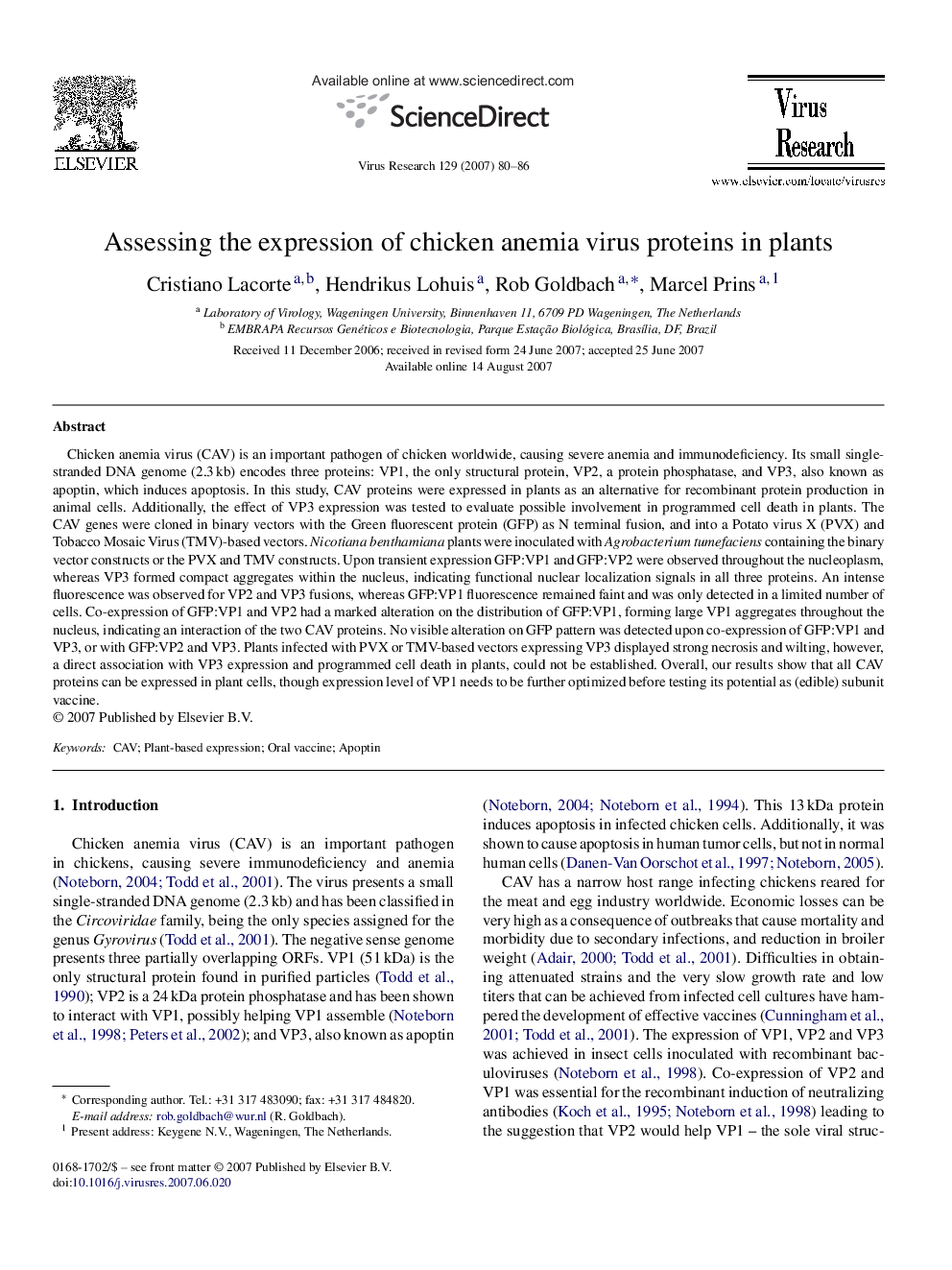| Article ID | Journal | Published Year | Pages | File Type |
|---|---|---|---|---|
| 3430746 | Virus Research | 2007 | 7 Pages |
Chicken anemia virus (CAV) is an important pathogen of chicken worldwide, causing severe anemia and immunodeficiency. Its small single-stranded DNA genome (2.3 kb) encodes three proteins: VP1, the only structural protein, VP2, a protein phosphatase, and VP3, also known as apoptin, which induces apoptosis. In this study, CAV proteins were expressed in plants as an alternative for recombinant protein production in animal cells. Additionally, the effect of VP3 expression was tested to evaluate possible involvement in programmed cell death in plants. The CAV genes were cloned in binary vectors with the Green fluorescent protein (GFP) as N terminal fusion, and into a Potato virus X (PVX) and Tobacco Mosaic Virus (TMV)-based vectors. Nicotiana benthamiana plants were inoculated with Agrobacterium tumefaciens containing the binary vector constructs or the PVX and TMV constructs. Upon transient expression GFP:VP1 and GFP:VP2 were observed throughout the nucleoplasm, whereas VP3 formed compact aggregates within the nucleus, indicating functional nuclear localization signals in all three proteins. An intense fluorescence was observed for VP2 and VP3 fusions, whereas GFP:VP1 fluorescence remained faint and was only detected in a limited number of cells. Co-expression of GFP:VP1 and VP2 had a marked alteration on the distribution of GFP:VP1, forming large VP1 aggregates throughout the nucleus, indicating an interaction of the two CAV proteins. No visible alteration on GFP pattern was detected upon co-expression of GFP:VP1 and VP3, or with GFP:VP2 and VP3. Plants infected with PVX or TMV-based vectors expressing VP3 displayed strong necrosis and wilting, however, a direct association with VP3 expression and programmed cell death in plants, could not be established. Overall, our results show that all CAV proteins can be expressed in plant cells, though expression level of VP1 needs to be further optimized before testing its potential as (edible) subunit vaccine.
